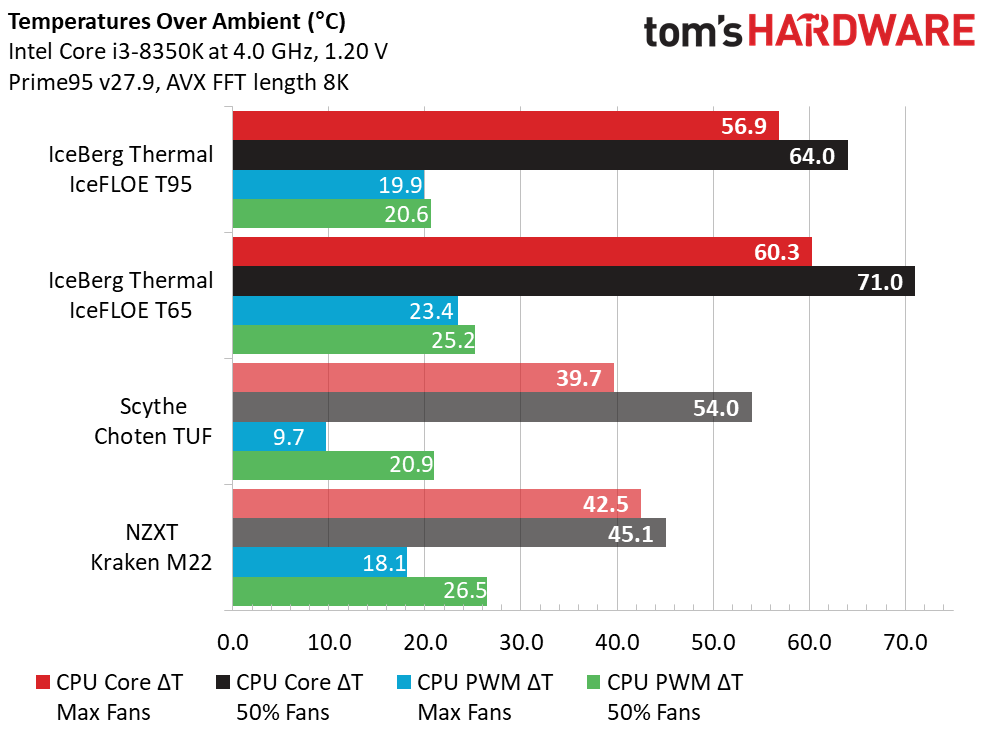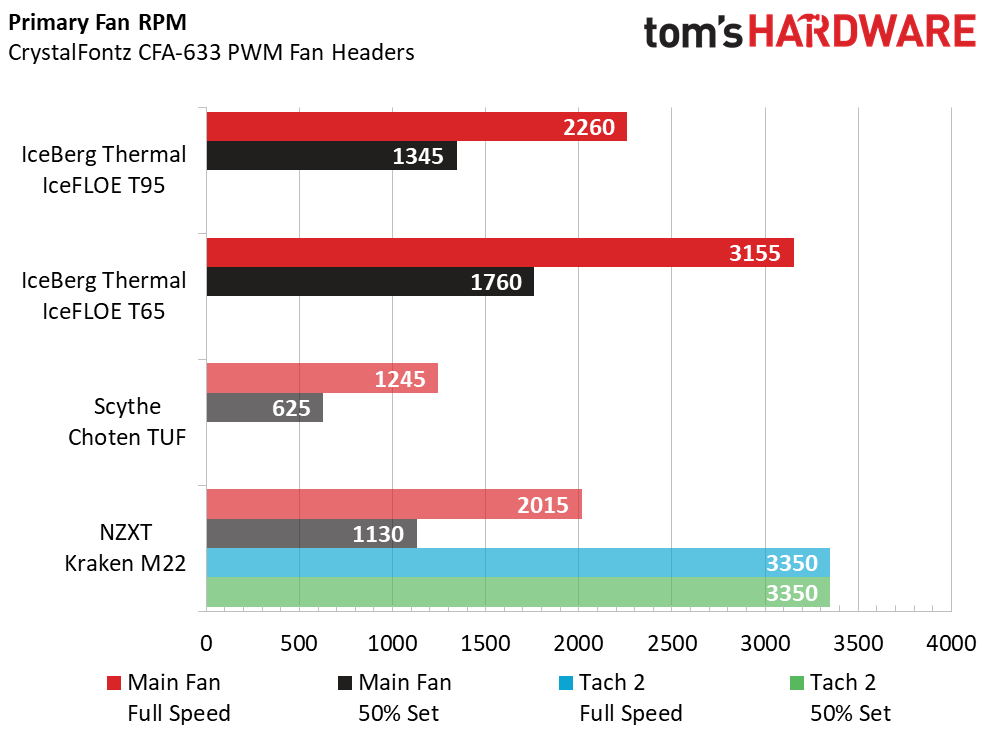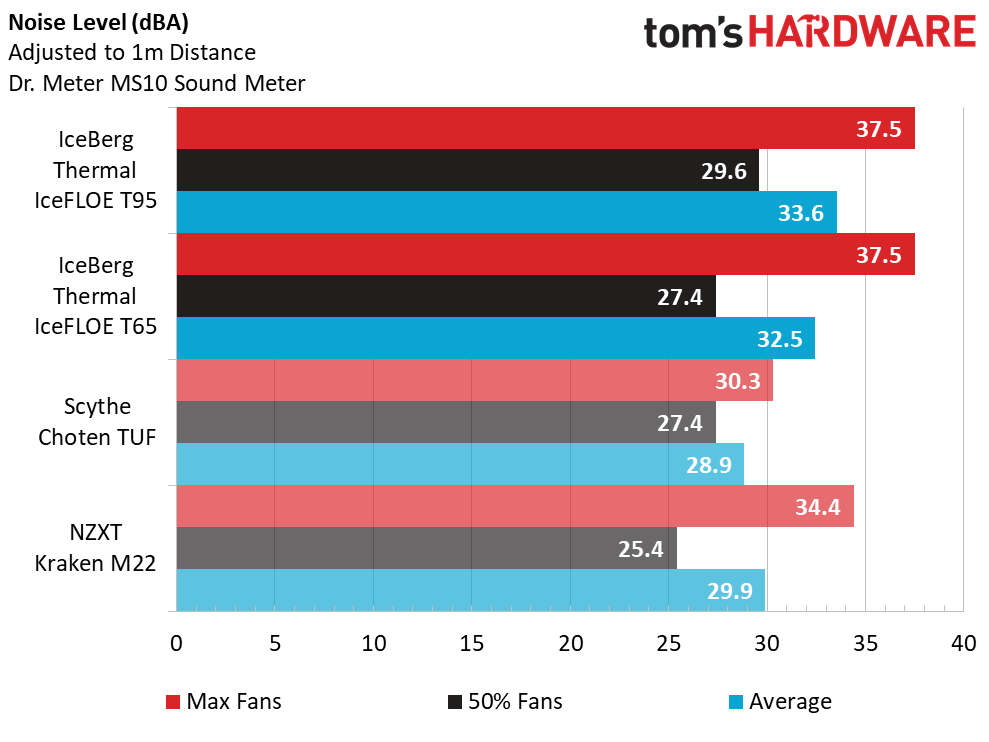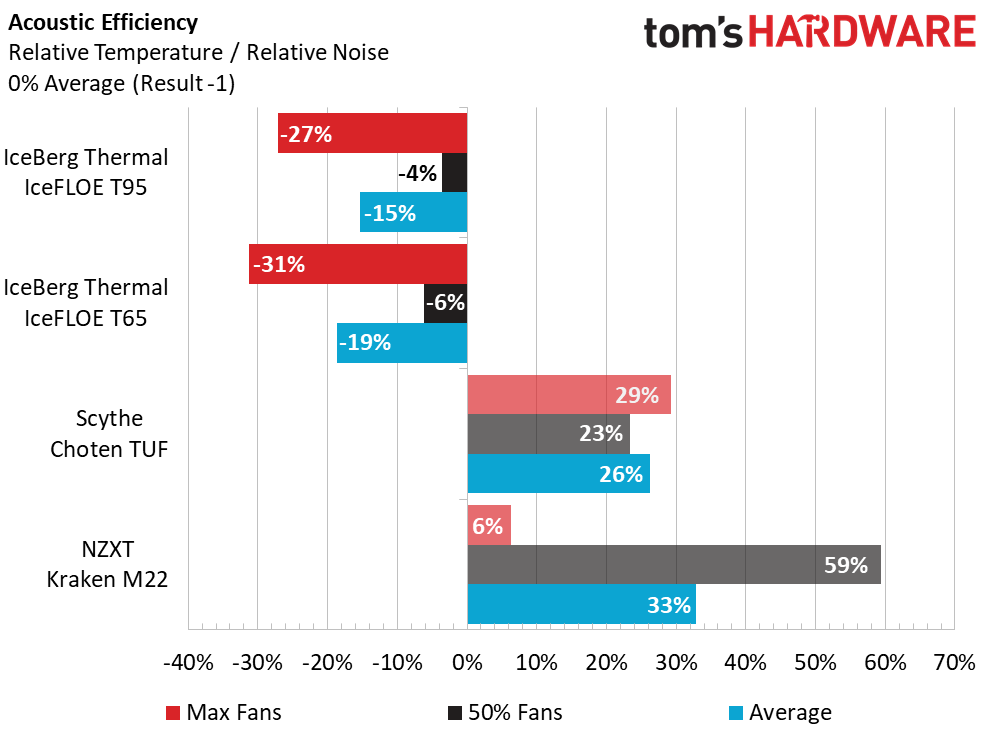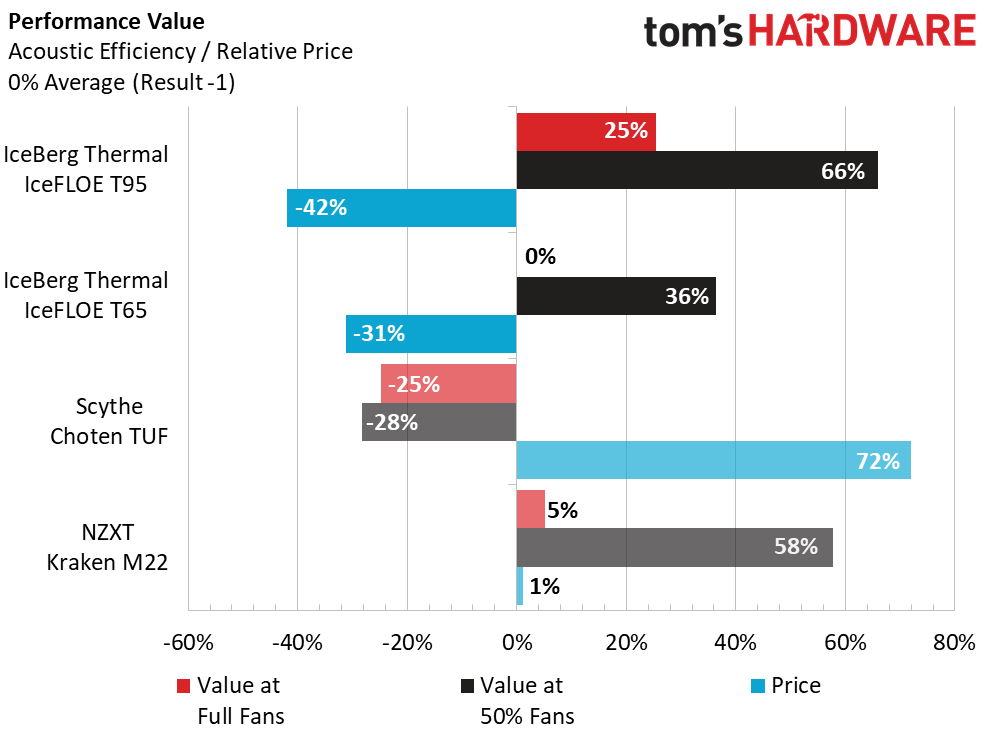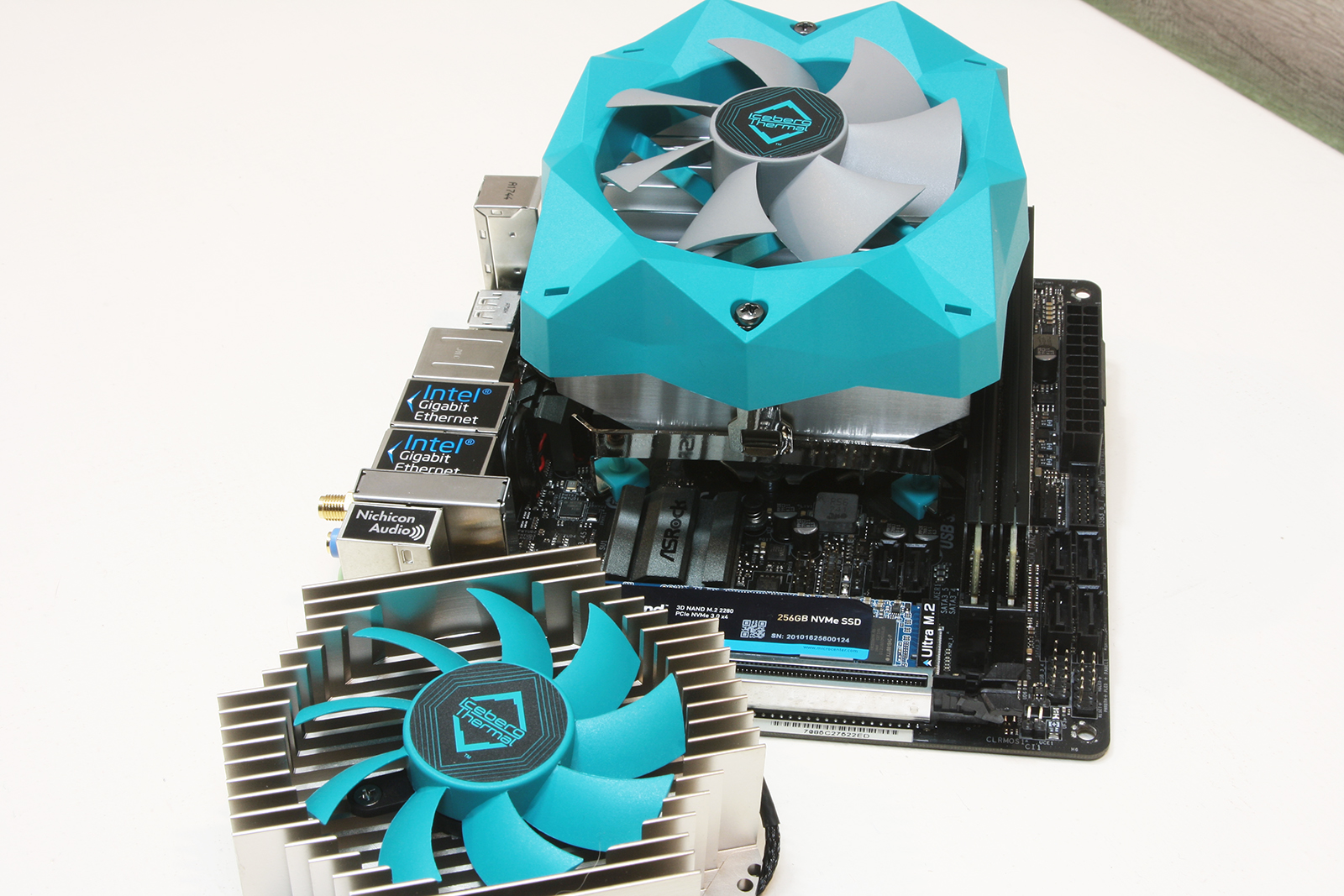Why you can trust Tom's Hardware
Heat
Immediately, we see that comparisons with the IceFLOE T95 and T65 lag a bit behind other low profile and small system build cooling solutions like the Scythe Choten TUF and NZXT Kraken M22, both wielding 120mm cooling fans.
Speed
The smaller fans used by the IceFLOE T95 (92mm) and T65 (80mm) spin at much higher rates than the 120mm fans used by the Choten and Kraken. Airflow is all about volume moved per minute of time, so in order for smaller fans to do as much work as their larger counterparts, an increase of RPM is used to close the gap.
Noise
Faster fan speeds typically means an increase in noise levels as a result of the blades interrupting air surrounding the heatsink at a blistering pace. Much like a boat propeller on a placid lake, the faster they spin, the more of a wake is produced, creating waves – in this case, audible noise.
Effeciency
As a result of higher load temps and elevated noise levels, both the IceFLoe T95 and T65 struggle behind the 120mm solutions in our low-profile and compact systems coolers.
We see an interesting finish in the final chart. Both of the IceBerg Thermal solutions benefit from lower unit pricing than the Choten TUF and Kraken M22. The IceFLOE T95 is available at $26.99, while the T65 has an asking price of $31.99, making them the lowest-priced coolers in our comparison chart.
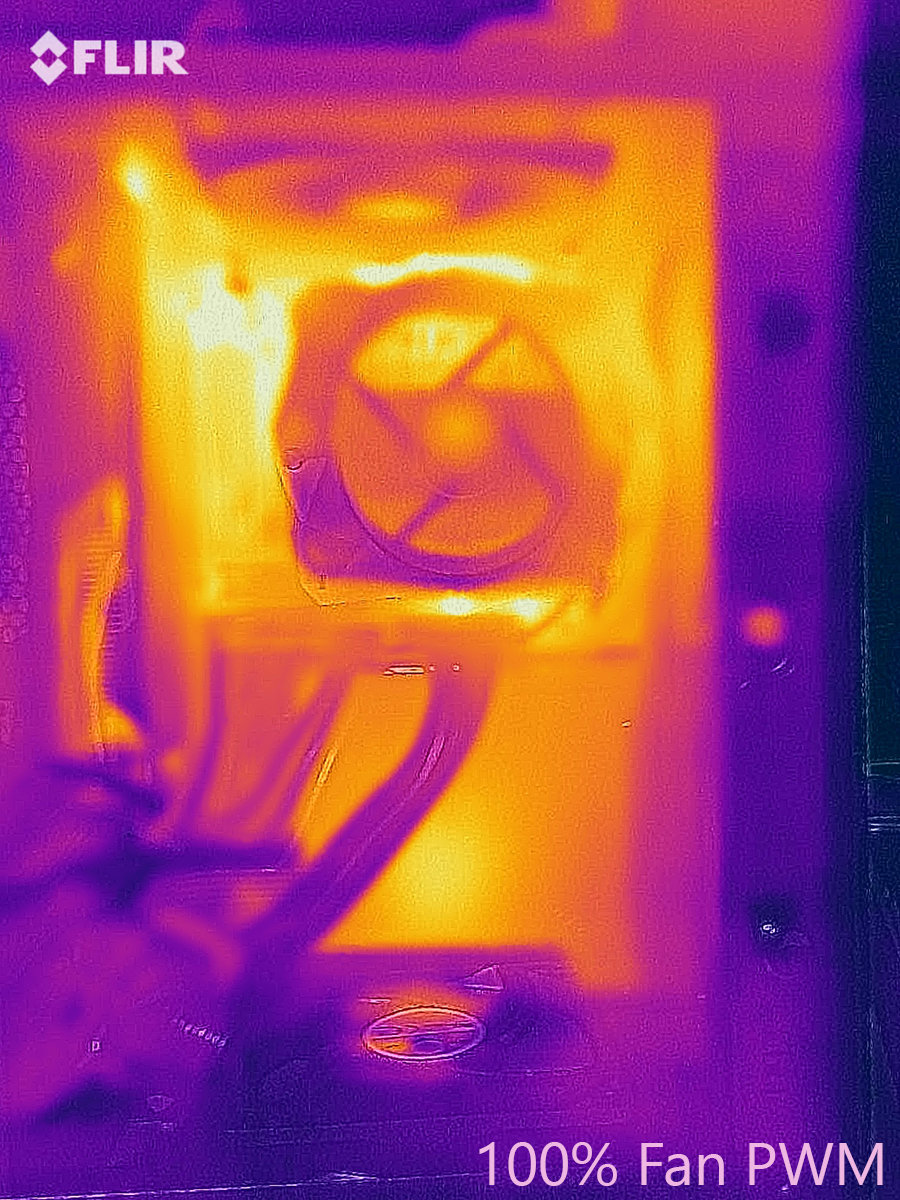
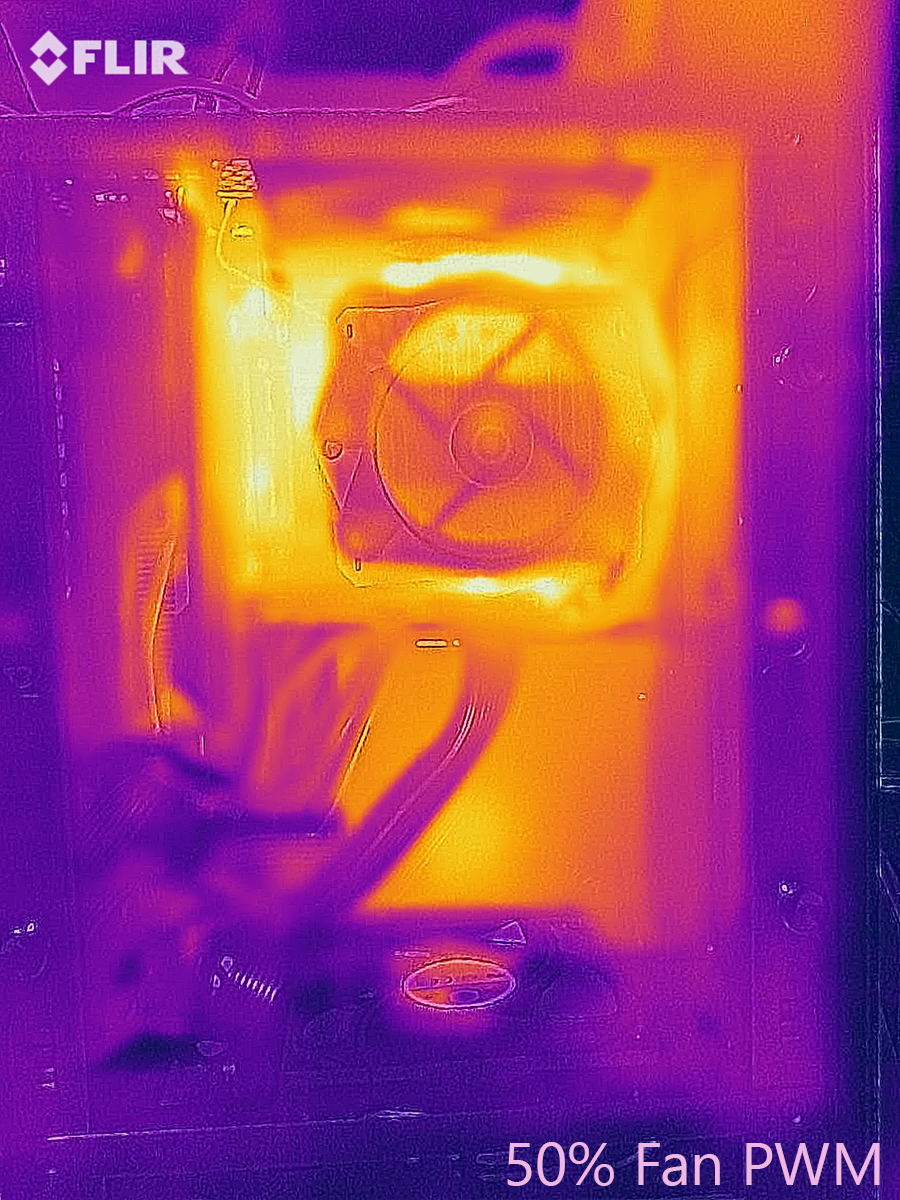
Thermal imaging from our FLIR ONE Pro camera shows minimal differences in both the IceFLOE T95 at 50% and 100% PWM as well as for the IceFLOE T65 at 50%/100%. This is likely due to the overall smaller cooler size and the inability of each to effectively dissipate enough thermal load between the different fan speeds. This shows that even lower-power CPUs can easily push these smaller cooling solutions under full loads, as we noted with our load temperature graph.
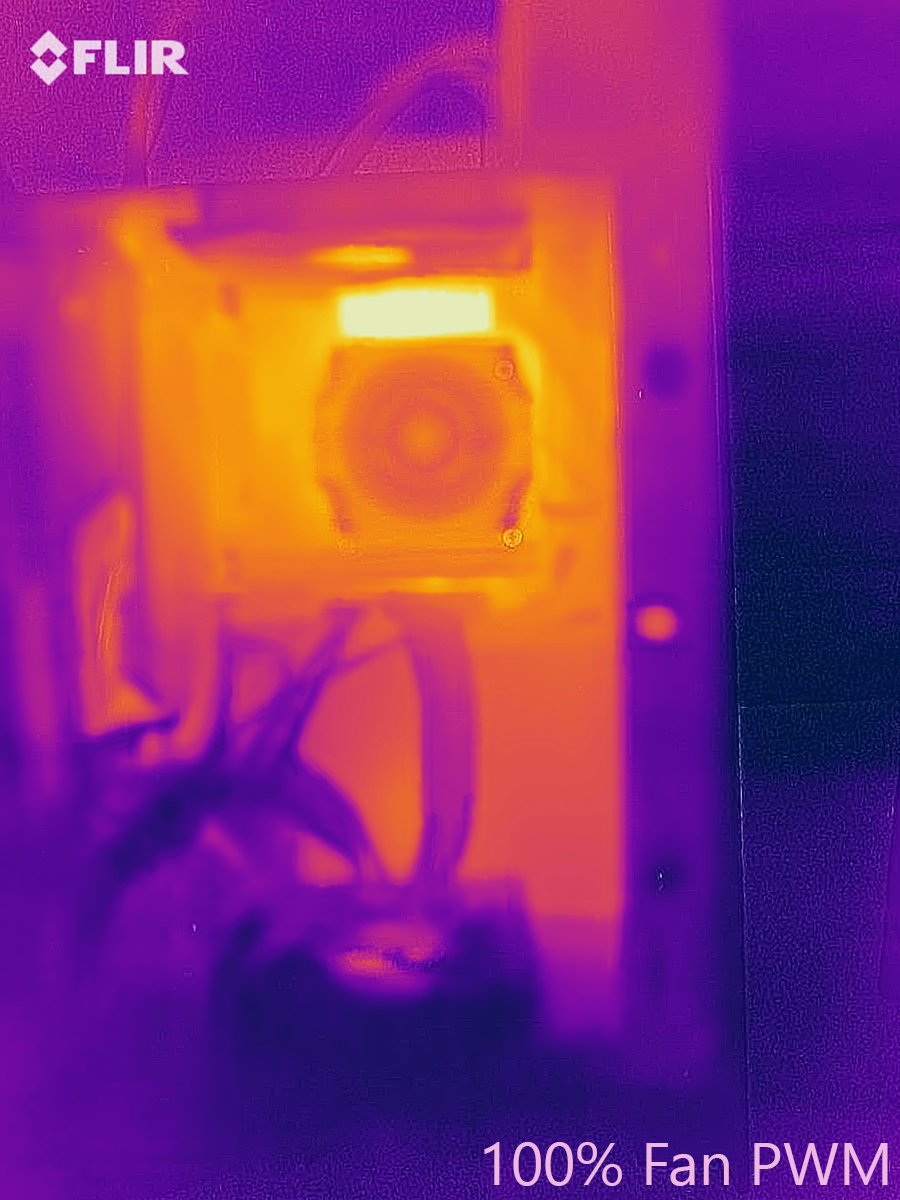

Conclusion
IceBerg Thermal has created a pair of well-crafted, small heatsink coolers in the IceFLOE T95 and T65 for the small system builder requiring an OEM boxed cooler replacement that doesn’t feature an AMD or Intel logo. The pair of small, budget coolers aren’t designed to be world-record beaters, but what they lack in size they make up for as excellent space-saving alternatives for compact mITX or mATX machines.
Get Tom's Hardware's best news and in-depth reviews, straight to your inbox.
System builders scrambling for every extra millimeter of room in small cases for hardware placement like taller memory heat spreaders and full-size GPUs, now have smaller alternatives for ultra-compact PCs in a world dominated by much more massive cooling options.

Garrett Carver is a contributor for Tom’s Hardware, primarily covering thermal compound comparisons and CPU cooling reviews; both air and liquid, including multiple variations of each.
-
closs.sebastien it could be tested and compared with intel stock cooler for i5. This comparison would have been nice and useful.Reply -
damric You should have included some stock coolers in comparison. Also no AVX? That's weak. Leave the CPUs at stock, sure, but let them stretch their legs to the fullest to see if this actually an adequate cooling solution. Adequate = no thermal clock throttling or shutdown. This review tells me no useful information at all.Reply
As for the product, looking at the poor quality extruded aluminum, I doubt it performs better than the freebie low TDP stock coolers from Intel or AMD. If it does, then I doubt it costs less than what you can get the higher TDP stock coolers from Ebay, like the Intel ones with the copper core and Wraith Spire/Prism. A lot of people give those away on the forums for free +shipping. -
CompuTronix Reply
The Author's test methodology is correct.damric said:Also no AVX? That's weak. Leave the CPUs at stock, sure, but let them stretch their legs to the fullest to see if this actually an adequate cooling solution.
Prime95 Small FFTs (all AVX test selections disabled) is ideally suited for testing thermal performance, because it conforms to Intel's Datasheets (see page 90, section 5.1.1, 1st paragraph, 2nd sentence)as a steady-state 100% TDP workload with steady Core temperatures. No other non-proprietary utility can so closely replicate Intel's thermal test workload, however, OCCT Small Data Set (Steady Load), SSE Instruction Set is very nearly identical.
When heavy "real-world" AVX workloads are at "peak" load, such as video transcoding apps (which are fluctuating workloads), the workload will typically approach, but not exceed P95 Small FFTs without AVX. The CineBench R23 CPU Render Test shown below is a good example of a utility which replicates real-world AVX transcoding workloads. Prime95 Small FFTs (all AVX test selections enabled) is nearly a 130% workload, which is unrealistically higher than real-world AVX workloads.
Utilities that don't overload or underload your processor will give you a valid thermal baseline. Here’s a comparison of utilities grouped as thermal and stability tests according to % of TDP, averaged across six processor Generations at stock settings rounded to the nearest 5%:
CT :sol: -
Flayed One thing I don't get with the temperature chart is it looks like the ambient temperature is 37 degrees?Reply -
damric ReplyCompuTronix said:The Author's test methodology is correct.
Prime95 Small FFTs (all AVX test selections disabled) is ideally suited for testing thermal performance, because it conforms to Intel's Datasheets (see page 90, section 5.1.1, 1st paragraph, 2nd sentence)as a steady-state 100% TDP workload with steady Core temperatures. No other non-proprietary utility can so closely replicate Intel's thermal test workload, however, OCCT Small Data (Steady Load), SSE Instruction Set is very nearly identical.
When heavy "real-world" AVX workloads are at "peak" load, such as video transcoding apps (which are fluctuating workloads), the workload will typically approach, but not exceed P95 Small FFTs without AVX. The CineBench R23 CPU Render Test shown below is a good example of a utility which replicates real-world AVX transcoding workloads. Prime95 Small FFTs (all AVX test selections enabled) is nearly a 130% workload, which is unrealistically higher than real-world AVX workloads.
CT :sol:
Be a man or be in the band. -
Co BIY R&D challenge: Find a more off-putting color than Noctua for our cooling solution.Reply
Mission accomplished.
Maybe they got a deal on bulk plastic originally made for the Lego "Friends" sets.
I would like to see a full-on review of this newer intel OEM cooler.
https://www.amazon.com/Intel-Heatsink-Assembly-Cooling-BXTS15A/dp/B013U542QE/ref=sr_1_8?dchild=1&keywords=intel+cooler+oem&qid=1613840100&sr=8-8
